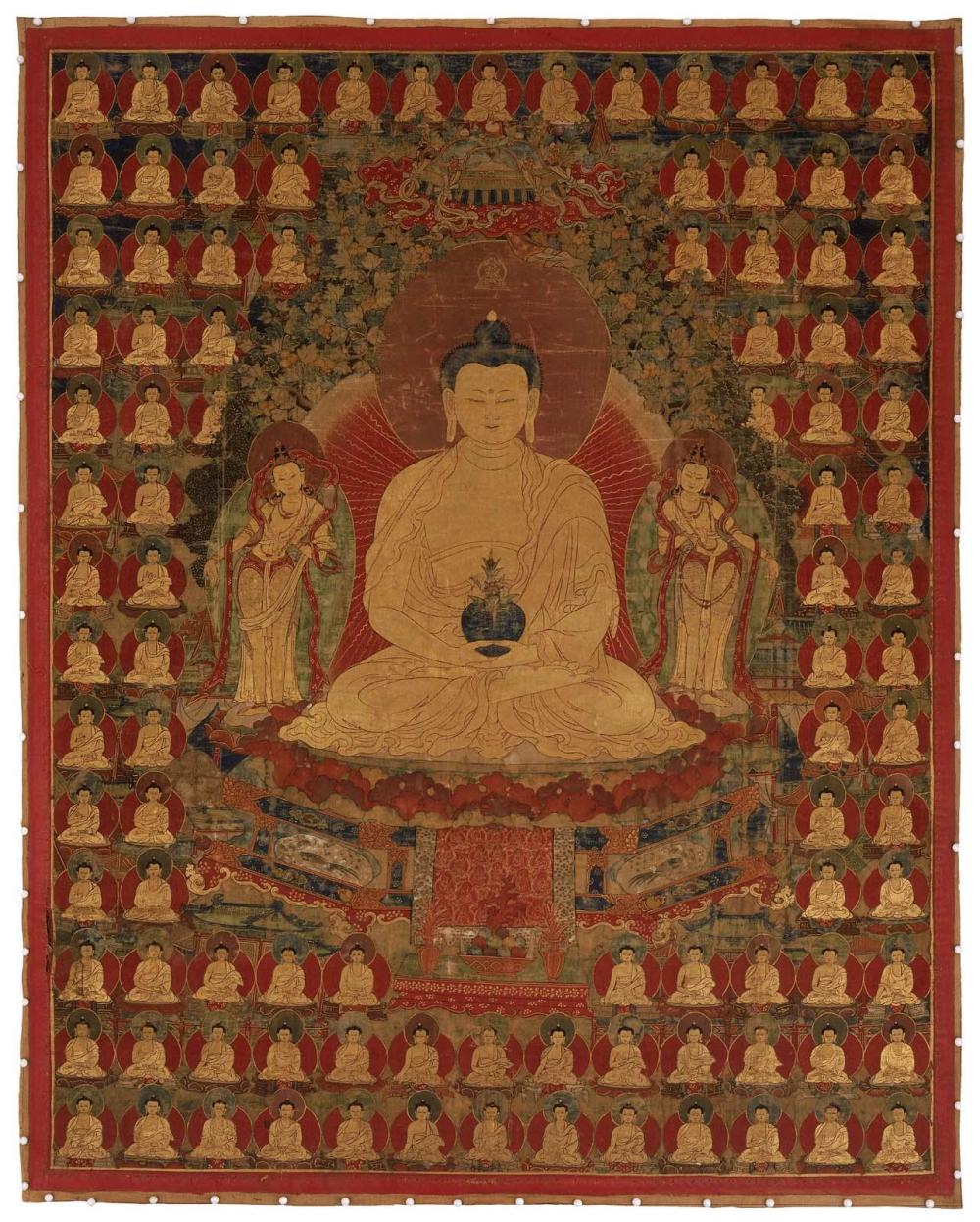Advanced Search 

Amitabha
Tibetan
17th century
Object Place: Tibet
Medium/Technique
Distemper and gold on cotton
Dimensions
Overall: 64 x 51cm (25 3/16 x 20 1/16in.)
Credit Line
Gift of John Goelet
Accession Number67.848
NOT ON VIEW
CollectionsAsia
ClassificationsPaintings
DescriptionPainting in hanging scroll (thangka) format, with streamers, veil and decorative borders.
Also known as Amitabha, Amitayus the Buddha of Eternal Life is one of the most popular deities in all sects of Buddhism. He is shown here enthroned in Sukhavati, his Western paradise. Worship of this Buddha often stresses the desire for rebirth in Sukhavati because this pure land provides optimal conditions for the achievement of enlightenment. Amitayus sits in meditation and holds the golden vase containing the elixir of life. He is attended by two standing bodhisattvas and a host of small Buddhas seated on the balconies surrounding his throne. The small gold figue above Amitayus's head can be read either as an image of Vairocana, the head of Amitayus' lineage, or as a secondary manifestation of Amitayus. The complex imagery of this thangka reflects the diverse traditions found in 17th century Tibetan painting. The pose of the two principal Bodhisattvas and the lush decoration of their skirts (dhotis) can be traced back to earlier paintings and sculptures from India and Nepal. Nepali influence is also found in the stylized treatment of the trees behind these two bodhisattvas. The more organic treatment of the fruit-bearing tree above Amitayus' head on the other hand derives from the flower and bird painting traditions of China.
Also known as Amitabha, Amitayus the Buddha of Eternal Life is one of the most popular deities in all sects of Buddhism. He is shown here enthroned in Sukhavati, his Western paradise. Worship of this Buddha often stresses the desire for rebirth in Sukhavati because this pure land provides optimal conditions for the achievement of enlightenment. Amitayus sits in meditation and holds the golden vase containing the elixir of life. He is attended by two standing bodhisattvas and a host of small Buddhas seated on the balconies surrounding his throne. The small gold figue above Amitayus's head can be read either as an image of Vairocana, the head of Amitayus' lineage, or as a secondary manifestation of Amitayus. The complex imagery of this thangka reflects the diverse traditions found in 17th century Tibetan painting. The pose of the two principal Bodhisattvas and the lush decoration of their skirts (dhotis) can be traced back to earlier paintings and sculptures from India and Nepal. Nepali influence is also found in the stylized treatment of the trees behind these two bodhisattvas. The more organic treatment of the fruit-bearing tree above Amitayus' head on the other hand derives from the flower and bird painting traditions of China.
InscriptionsOn reverse, in red and black ink, a drawing of a stupa (chorten) with a long inscription in small Tibetan print - to be read. Also on the inscription is a line of cursive Tibetan script - to be read.
ProvenanceBy 1967, John Goelet, New York, NY (probably purchased in India or Nepal in he 1960's); 1967, gift of Goelet to the MFA. (Accession Date: September 13, 1967)
